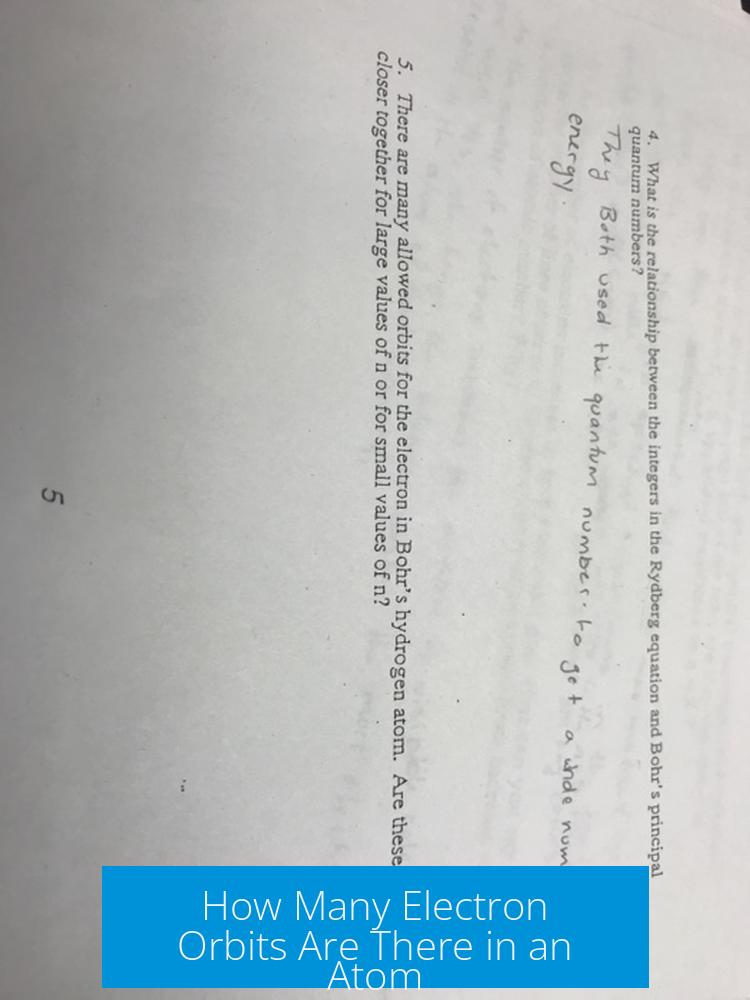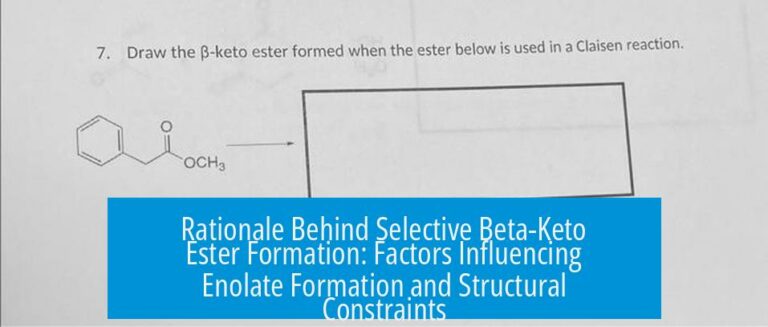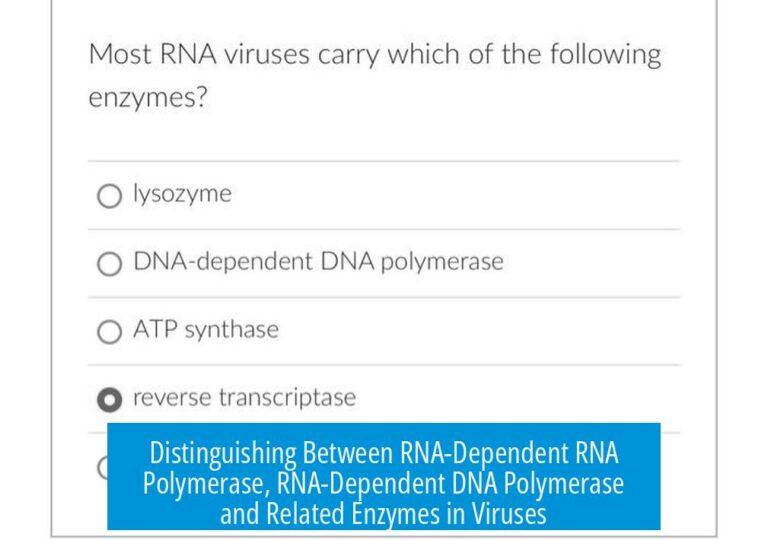How Many Electron Orbits Are There in an Atom?

The number of electron orbits in an atom is not fixed because electrons do not revolve in defined circular paths or orbits like planets. Instead, electrons occupy regions called orbitals, which represent probabilities where electrons are likely found. These orbitals are numerous and theoretically unlimited, but their number and arrangement depend on the atom’s energy levels and quantum numbers.
Understanding the Difference Between Orbits and Orbitals

The classical idea of electrons moving in fixed circular orbits around the nucleus is outdated. Modern quantum mechanics replaces orbits with orbitals. Unlike orbits, orbitals are mathematical functions describing electron location probability, not fixed paths.
- Orbits imply electrons physically revolve around the nucleus.
- Orbitals define regions in space where electrons are most likely present.
- The number of orbitals is theoretically unlimited due to an infinite number of possible energy states.
This crucial distinction changes how chemists understand the structure of atoms and electron behavior. Orbitals reflect where electrons probably reside, not where they travel along fixed tracks.
Number of Electron Orbits and Energy States
When electrons fill an atom, they occupy the lowest possible energy states first. No two electrons can have the same set of quantum numbers, a principle known as the Pauli exclusion principle. This forces electrons into distinct energy levels and orbitals.
As electrons increase, more energy states and orbitals become occupied. Higher energy states exist further from the nucleus and involve more orbitals. While theoretically, there can be infinitely many orbitals extending outward, practical constraints limit their number.
- Atoms cannot have infinitely many electrons due to size and nuclear charge limits.
- Highly excited electrons may leave the atom (ionization) rather than occupy extremely high energy orbitals.
Therefore, while electron orbitals’ number is theoretically infinite, practical atomic structure caps this number.
Orbitals, Electron Configuration, and Element Examples
Each atom’s electron arrangement, or configuration, shows how electrons fill available orbitals. Take carbon as an example. It has six electrons and the configuration 1s2 2s2 2p2. This indicates:
- One 1s orbital filled with two electrons.
- One 2s orbital filled with two electrons.
- Two out of three possible 2p orbitals partially filled.
Orbital types differ by shape and electron capacity:
| Orbital Type (Subshell) | Number of Orbitals | Electrons per Orbital | Total Electron Capacity |
|---|---|---|---|
| s | 1 | 2 | 2 |
| p | 3 | 2 | 6 |
| d | 5 | 2 | 10 |
| f | 7 | 2 | 14 |
Electrons fill orbitals according to energy. Sometimes lower energy orbitals fill after what appear as higher ones due to energy differences, e.g., 4s fills before 3d.
Influence of the Principal Quantum Number (n) on Orbitals
The principal quantum number, n, defines an atom’s energy level or shell number and influences orbital count. For each n:
- Number of possible orbitals grows as n increases.
- Each shell contains subshells s, p, d, f, g… depending on n.
- Some subshells (g and higher) are theoretical and rarely found in known atoms.
The number of orbitals per principal quantum number is:
| Principal Quantum Number (n) | Number of Orbitals | Orbitals by Type |
|---|---|---|
| 1 | 1 | 1s |
| 2 | 4 | 1s, 3p |
| 3 | 9 | 1s, 3p, 5d |
| 4 | 16 | 1s, 3p, 5d, 7f |
| 5 | 25 | 1s, 3p, 5d, 7f, 9g |
Note: These counts consider cumulative orbitals from s, p, d, f, and g subshells available up to that principal quantum number.
Practical Example: Phosphorus Bonding and Electron Orbits
The electron arrangement influences chemical bonding capabilities. Phosphorus, with an electronic configuration including 3s2 3p3, illustrates this point.
- Phosphorus has five valence electrons, allowing it to form up to five bonds.
- In bonding, hybridization can involve empty d orbitals at n=3, allowing sd hybridized bonds.
- Phosphorus bonds with oxygen (~1s2 2s2 2p4) showcase how electrons in p orbitals participate in bonding.
This combination illustrates how orbitals at different energy levels contribute to an atom’s bonding versatility.
Summarizing How Many Electron Orbits Exist in an Atom
Summarizing, electron orbits, as simple circular paths, do not exist. Instead, there are orbitals whose number grows with energy levels and depends on quantum numbers.
- Orbitals are probability regions, not fixed orbits.
- Higher principal quantum numbers add more complex orbitals (s, p, d, f, g).
- The total number of orbitals is theoretically infinite but practically limited by atomic size and electron excitation.
- Electron configurations show which orbitals are occupied and control chemical properties.
Key Takeaways
- Electrons do not travel in fixed orbits but occupy quantum orbitals.
- The number of orbitals grows with the principal quantum number and subshell type.
- Orbitals have different shapes (s, p, d, f, g) and electron capacities.
- Theoretical orbitals can extend infinitely, but physical constraints limit real atoms.
- Electron configuration determines how orbitals fill and how atoms bond.
How many electron orbits does an atom have?
Electron orbits are not literal paths. Instead, electrons occupy orbitals. The number of orbitals increases with energy levels, so atoms can have many orbitals depending on their principal quantum number.
What determines the number of electron orbitals in an atom?
The principal quantum number (n) determines the number of orbitals. Higher n means more orbitals and complex subshells like s, p, d, and f. Each row of the periodic table corresponds to a different principal energy level.
Can the number of electron orbits be infinite?
In theory, yes. Electrons can be excited to very high energy levels creating new orbitals. But practically, electrons leave the atom before reaching infinite energy states due to weak binding at high energy.
How do orbitals differ from electron orbits?
Orbitals represent regions where electrons likely reside. Orbits suggest fixed circular paths, which is a simplified, outdated model not used in modern atomic theory.
How many orbitals does the third energy level contain?
For n=3, there are 14 orbitals. This includes 3 s orbitals, 6 p orbitals, and 5 d orbitals.
Why does phosphorus form five bonds in terms of orbitals?
Phosphorus has an energy level n=3 with 3 p and 5 d orbitals. It can hybridize these orbitals to form 5 bonds, using its valence electrons and empty d orbitals.





Leave a Comment